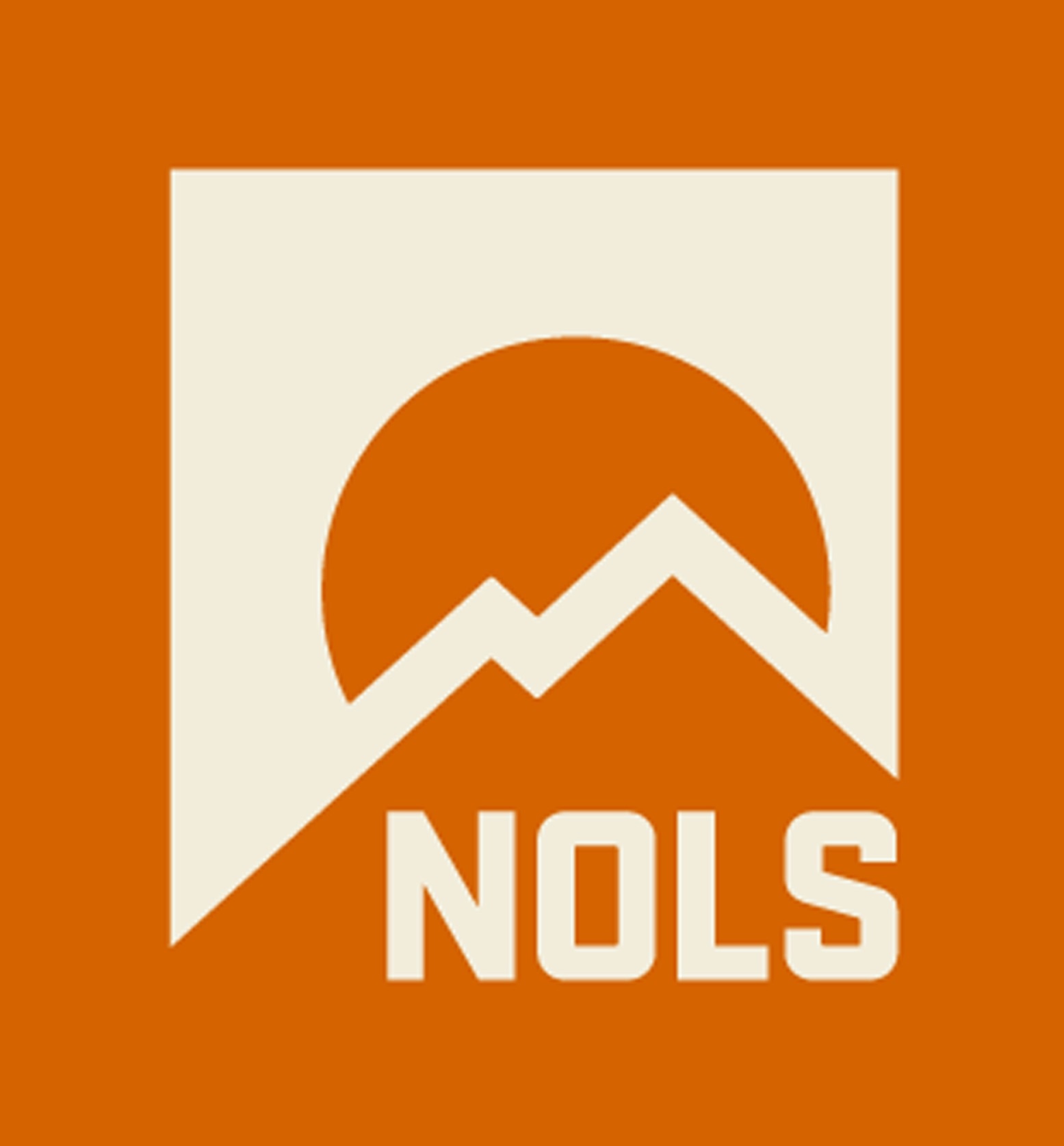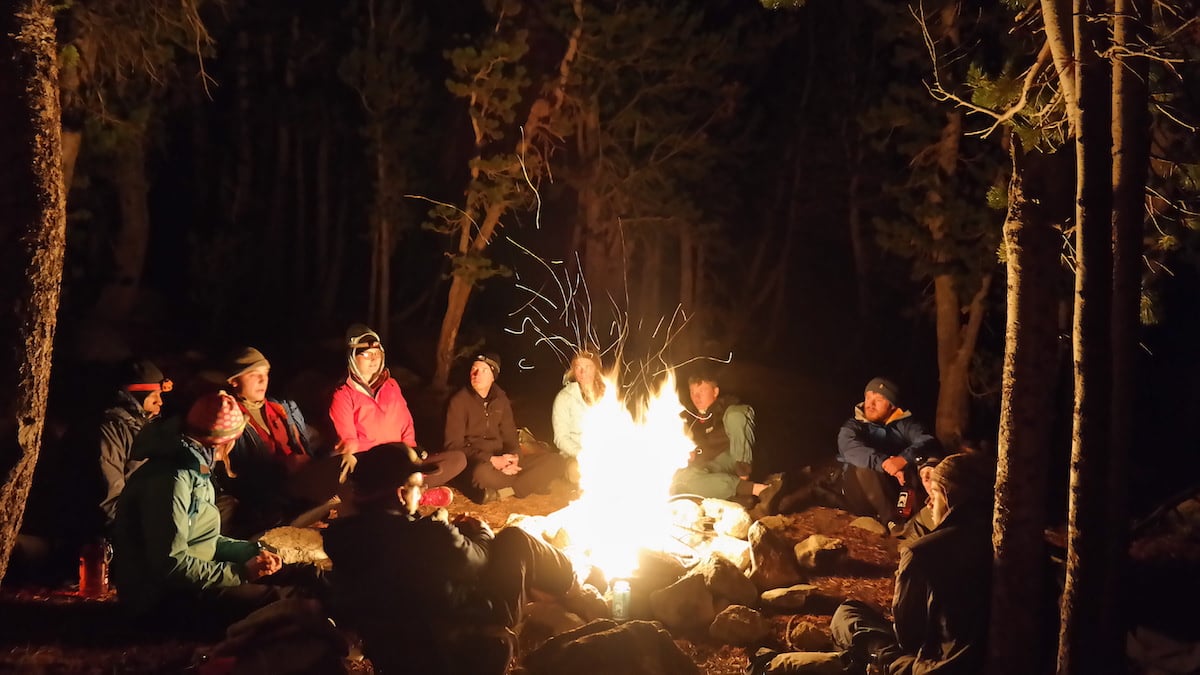
Emergency rooms are often burdened by people who are not ill or injured enough to truly need an ER, which is especially true today with the COVID-19 pandemic. As a NOLS Wilderness Medicine graduate, you can use your training to alleviate strain on healthcare services.
Graduates who aren’t full-time medical professionals can contact their local medical facilities to see about volunteering their skills. Even if you aren’t directly interacting with patients, you can use your training on yourself or others to prevent overcrowding existing services.*
Though your class scenarios emphasized practicing backcountry medicine, NOLS prepared you to act in unexpected emergencies, which include this pandemic.
*Never utilize a skill that is outside your certification or that you are uncomfortable practicing.
Mitigating Risk While Assisting Patients
The scene size-up is your first crucial step of patient treatment and has components that are particularly pertinent during this pandemic.
Remember the first step: “you are number one!” Your priority is your safety. If you walk in inappropriate shoes on glass to reach a patient or aren’t prepared to spend prolonged time with them in the weather, you risk becoming a patient.
Likewise, step three of the size-up prevents disease spread—“not on me!” Practice meticulous BSI (body substance isolation). Start with the hand washing sandwich: wash your hands before and after patient care. NOLS recommends keeping gloves in your first aid kit, though we recognize current national shortages. Washing with hot water, if available, and lots of soap (but please don’t hoard!) will help prevent spreading germs.
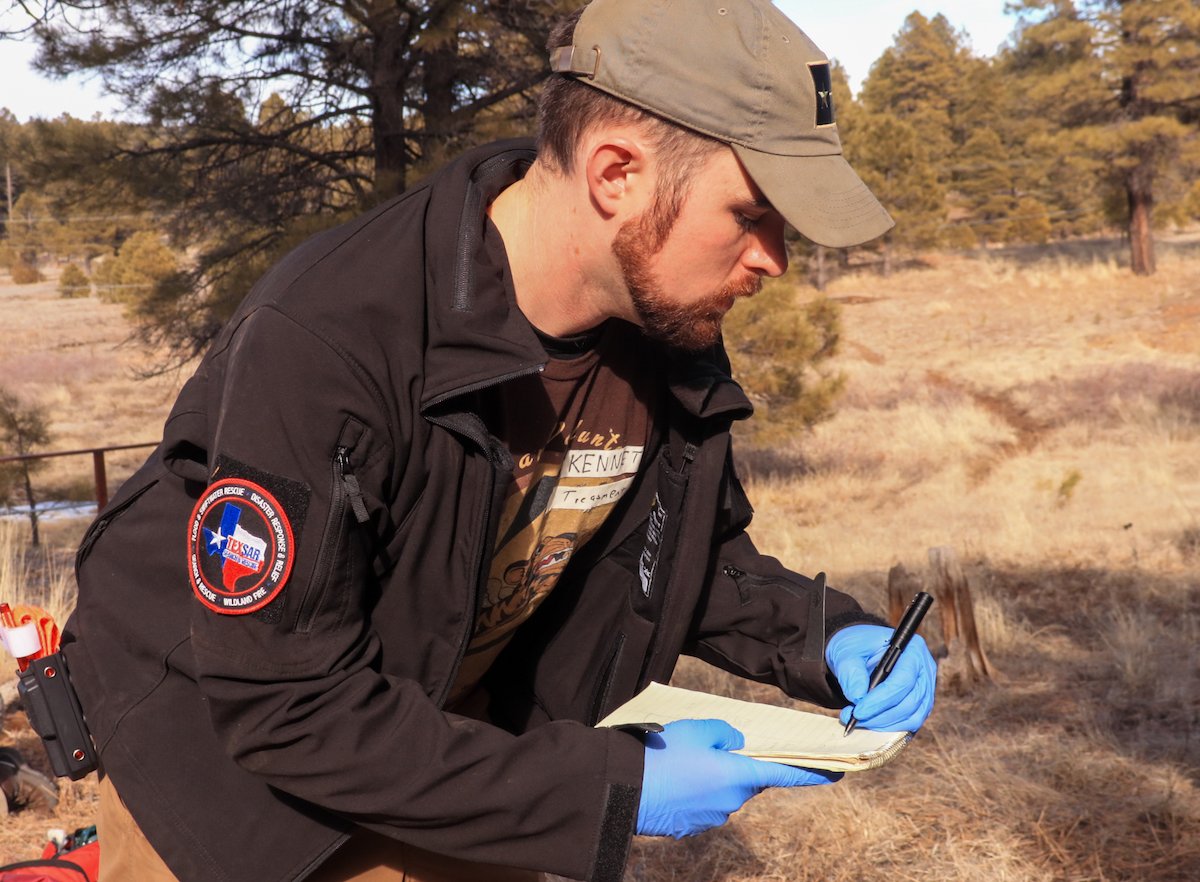
While approaching the patient, stop six feet away from them to make your assessment on whether they’re ill or injured. Signs/symptoms of a possible respiratory illness include cough, shortness of breath, flu-like signs, and feverish symptoms.
If the patient displays respiratory illness symptoms or if you are not sure, you should get a mask and ideally be able to place a mask, glasses/goggles, gloves, or your best rain-proof outerwear on your patient. Call emergency services for this patient. If you don’t have a mask, any facial cover is better than none.
Prioritize comforting your patient until EMS arrives with their personal protective gear. You may not have practiced this during your course, but it’s a new reality during this pandemic.
If your patient is responsive, you may be able to assess risk of a respiratory illness with a conversation. If they’re unresponsive, in our current medical crisis, you should assume that they may be contagious and therefore protect yourself with gloves and a mask.
After your size-up, complete a thorough patient assessment. Breath sounds can be a key indicator of respiratory illness. Seek care immediately if the patient exhibits any life threats.
Deciding When to Seek Definitive Care
After your patient assessment, use evacuation guidelines to determine if the illness/injury is urgent enough for definitive care. There are many minor injuries that end up in an ER visit that are avoidable.
Below we've outlined three common injuries wilderness medicine grads may be able to treat in the frontcountry, as well as guidelines on when to seek definitive care.
Wound Treatment and Management
Slicing yourself with a knife. Shattering a lightbulb. Falling while walking your dog. Even in the frontcountry, wounds are prevalent.
Wound treatment
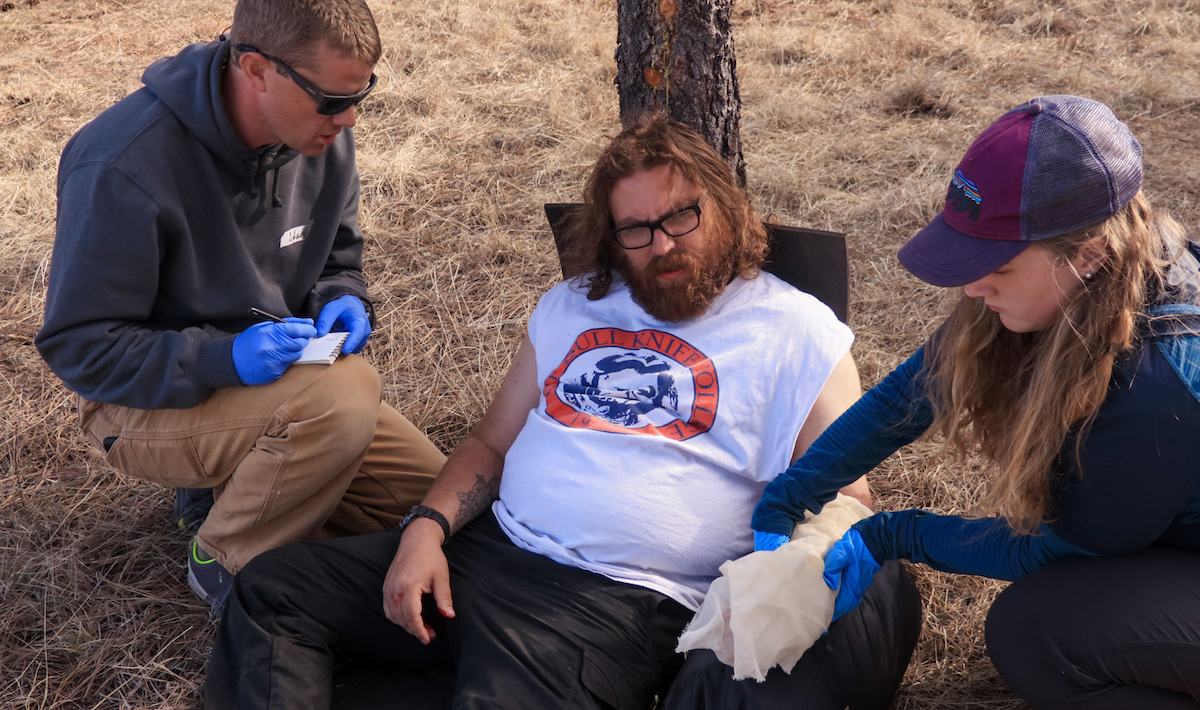
- Control bleeding—apply direct pressure with gauze or gloved fingers to the source of bleeding.
- For more serious wounds, pack (stuff) the wound with gauze or a clean cloth and then apply more pressure.
- Promote healing and infection by cleaning around the wound with soap and water/disinfectant, then rinse.
- Remove foreign matter with disinfected tweezers or by gently brushing it out of the wound.
- Irrigate the wound with clean water, preferably from a tool that can release water with pressure, like a syringe.
- Cover the wound with a clean bandage. You can close a deeper wound with steri-strips. Keep clean/dry and change it every 24 hours.
After the wound is cleaned and dressed, you should monitor the wound and monitor for the following signs and symptoms for infection.
Signs and symptoms of infection
- Redness extending beyond the wound
- Warmth, mild swelling, and tenderness
- Pus formation
- Heat, swelling, discoloration and pain often associated with increased pus formation (serious infection)
- Red streaking may form from the wound toward the nearest lymph nodes (serious)
- Swollen lymph nodes (serious)
- Fatigue, fever, and shock (serious)
When to Seek Definitive Care Immediately: Rapidly evacuate any patient with a wound that is heavily contaminated, opens a joint space, involves underlying tendons or ligaments, was caused by an animal bite, is on the face, has an impaled/embedded object, is an amputation, was caused by a crushing mechanism, or shows evidence of serious infection.
Sprains and Strains
In the wilderness, it’s unnecessary to decide if a musculoskeletal injury is a sprain, break, hairline fracture, etc. We don’t try to diagnose the injury or grade the sprain or the strain. Instead, we make a common-sense decision on whether the injured area is usable or unusable. If usable, we manage pain and may use tape or a brace for support. If unusable, we immobilize and evacuate. This backcountry treatment plan can currently be applied in the frontcountry during this pandemic.
Signs and symptoms of a musculoskeletal injury
- Diffuse (spreading) or specific pain
- Swelling and/or bruising
- Deformity
- Tenderness
- Sounds: snaps, pops, grating or crackling of bones
- Altered circulation, sensation, and motion (CSMs)
- Changes in range of motion
Treatment for usable musculoskeletal injuries
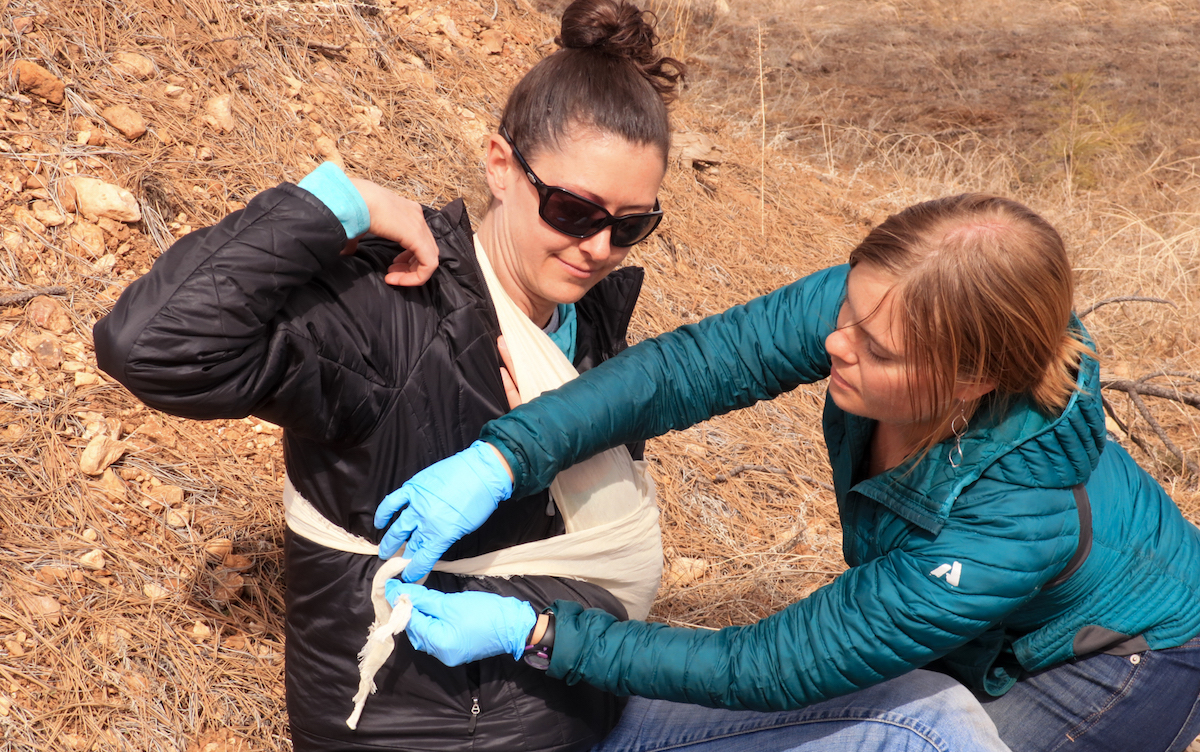
If an injury, like a turned ankle or strained wrist, is usable, and you can manage pain and swelling, then crafting a brace, wrapping, or taping the injury for support may be appropriate. Use the following steps to assess for functionality and treat usable injury.
- Look, ask, and feel (LAF) around the injury
- Check CSMs regularly and monitor for any decrease levels
- Assess for usability with a usability test
- Manage pain—icing the area for 20-40 minutes may help manage pain. May continue to ice every 2-4 hours or after use. Like in the backcountry, you can improvise if you don’t specifically have an ice pack. At home, things like bags of frozen peas make perfect ice packs!
- Elevating the injury may reduce swelling and help manage pain.
- Consider non-prescription pain medications, such as ibuprofen or acetaminophen.
- Support the usable injury with tape, wraps, or braces with standard first-aid equipment like a SAM splint, cravats, gauze, etc. You can also make a sling/swath from old clothing, pillow cases, etc.
When to Seek Definitive Care: Seek definitive care for unusable injuries, especially/rapidly if there’s exposed bone. If there’s no exposed bone and you’re concerned the patient will not be seen quickly, you can create a splint to increase the patient’s comfort.
Head Injury
Whether your children’s friendly wrestling match turned ugly or you fell while changing a lightbulb, head injuries occur at home more easily than you might expect. Head injuries can be alarming because they can affect the brain and put the patient at risk of intracranial pressure and swelling, which can lead to brain damage. However, some head injuries can be monitored at home.
Signs and symptoms of mild head injuries
- Brief change in level of responsiveness (LOR), like temporarily forgetting what caused the injury, but they quickly return to normal mental status
- Nausea and/or isolated vomiting
If your patient suffered a blow to the head but has only mild signs/symptoms, you can monitor them at home and call a local healthcare provider to verify your patient assessment/decision. While monitoring them, you want to make sure their signs/symptoms don’t progress to that of serious head injuries, which include:
- Patient is not awake or disoriented, and/or irritable or combative
- A worsened headache, disturbed vision, repeated vomiting, lethargy, sleepiness, poor balance, or seizures
When to Seek Definitive Care: Patients who exhibit signs/symptoms of a serious head injury need immediate emergency care. Also seek care for patients who lost responsiveness or who had an obvious altered mental status, even if it returns to normal, as well as patients who have signs/symptoms of a mild head injury that don’t improve after 24 hours.
Many mechanisms of injury (MOIs) for head injuries require spine protection until you reach definitive care. In the backcountry, we often conduct Focused Spine Assessments (FSA) to determine if we can release spine stabilization. However, that’s a skill, like reducing shoulder dislocations, that first responders typically aren’t licensed to practice in the frontcountry. Unless you’re certain the patient can’t be treated by emergency services, you shouldn’t perform an FSA outside the wilderness.
Communicating with Medical Professionals
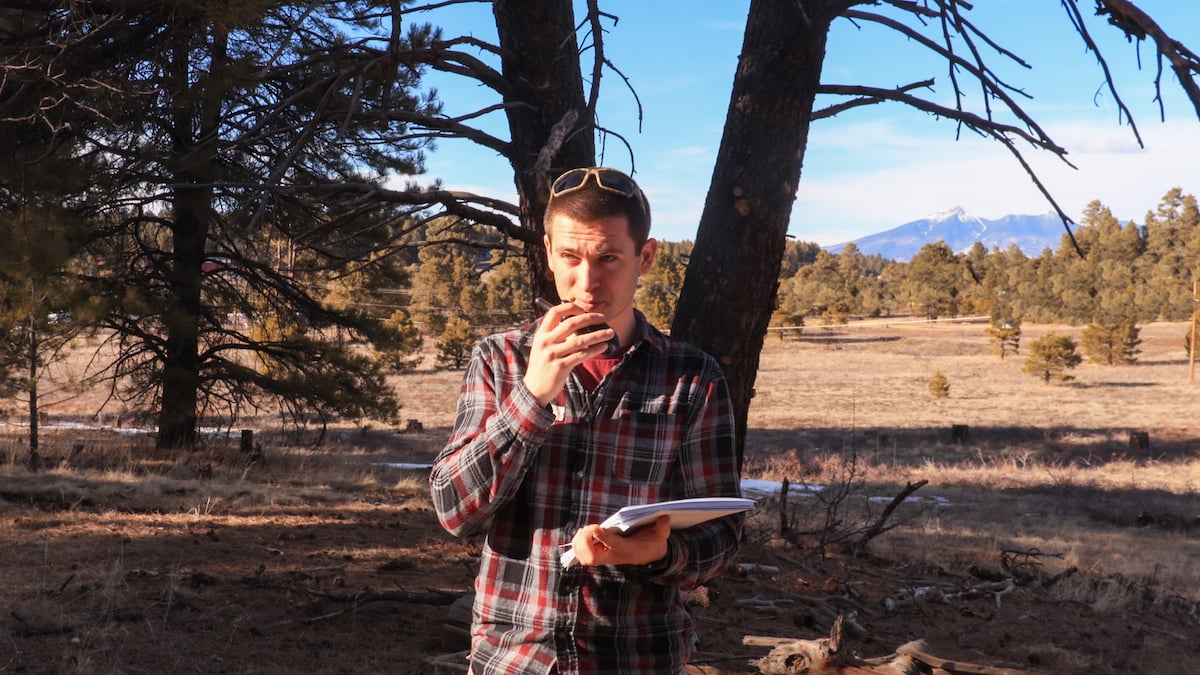
Many local healthcare systems are asking people to call before visiting a clinic. Your verbal SOAP report skills can help you communicate accurately and concisely with a healthcare professional. This allows them to determine the correct point of care for your patient. Be sure you always convey the patient’s chief complaint, the MOI/HPI (history of present illness), and your assessment (problems list).
Final Thoughts
During the COVID-19 pandemic, we all have an obligation to step up and help in ways that may not be part of our regular routines. As NOLS Wilderness Medicine graduates, you’re prepared to adapt to different circumstances and improvise with what you have to take control in an emergency.
Using your skills to help frontcountry patients minimizes the risk of exposing otherwise healthy people to unnecessary germs, as well as exposing hospital patients to asymptomatic or mild illnesses your patient may unknowingly have.
During this pandemic, your wilderness medicine training can empower you to lead in stressful settings and create a sense of calm for patients and bystanders. By treating a patient at home, you enable emergency health providers to provide better care to their current patients.
And remember, prevention is a key theme in the wilderness medicine skillset: wash your hands and practice physical distancing.
- Leadership Skills
- Wilderness First Responder
- First Aid
- Wilderness Medicine
- Flu Like Illness
- Illness & Injuries
- Leadership
- Covid 19
Written By
NOLS
NOLS is a nonprofit global wilderness school that seeks to help you step forward boldly as a leader.


